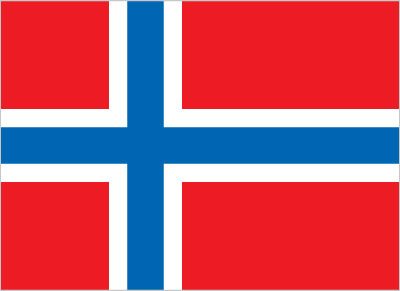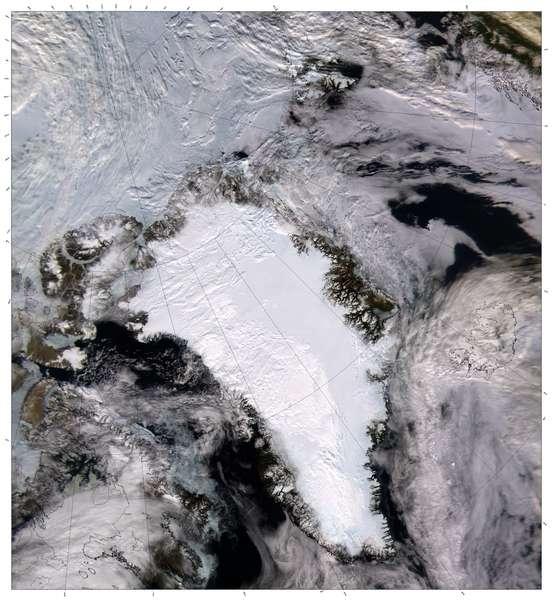Introduction :: SVALBARD
-
The archipelago may have been first discovered by Norse explorers in the 12th century; the islands served as an international whaling base during the 17th and 18th centuries. Norway's sovereignty was internationally recognized by treaty in 1920, and five years later it officially took over the territory. In the 20th century coal mining started and today a Norwegian and a Russian company are still functioning. Travel between the settlements is accomplished with snowmobiles, aircraft, and boats.
Geography :: SVALBARD
-
Northern Europe, islands between the Arctic Ocean, Barents Sea, Greenland Sea, and Norwegian Sea, north of Norway
78 00 N, 20 00 E
Arctic Region
total: 62,045 sq km
land: 62,045 sq km
water: 0 sq km
note: includes Spitsbergen and Bjornoya (Bear Island)
country comparison to the world: 125
slightly smaller than West Virginia
0 km
3,587 km
territorial sea: 4 nm
exclusive fishing zone: 200 nm unilaterally claimed by Norway but not recognized by Russia
arctic, tempered by warm North Atlantic Current; cool summers, cold winters; North Atlantic Current flows along west and north coasts of Spitsbergen, keeping water open and navigable most of the year
rugged mountains; much of the upland areas are ice covered; west coast clear of ice about half the year; fjords along west and north coasts
mean elevation: NA
elevation extremes: lowest point: Arctic Ocean 0 m
highest point: Newtontoppen 1,717 m
coal, iron ore, copper, zinc, phosphate, wildlife, fish
agricultural land: 0%
arable land 0%; permanent crops 0%; permanent pasture 0%
forest: 0%
other: 100% (2011 est.)
the small population is primarily concentrated on the island of Spitsbergen in a handful of settlements on the south side of the Isfjorden, with Longyearbyen being the largest
ice floes often block the entrance to Bellsund (a transit point for coal export) on the west coast and occasionally make parts of the northeastern coast inaccessible to maritime traffic
NA
northernmost part of the Kingdom of Norway; consists of nine main islands; glaciers and snowfields cover 60% of the total area; Spitsbergen Island is the site of the Svalbard Global Seed Vault, a seed repository established by the Global Crop Diversity Trust and the Norwegian Government
People and Society :: SVALBARD
-
1,872 (July 2014 est.)
country comparison to the world: 233
Norwegian 55.4%, Russian and Ukrainian 44.3%, other 0.3% (1998)
Norwegian, Russian
-0.03% (2014 est.)
country comparison to the world: 203
the small population is primarily concentrated on the island of Spitsbergen in a handful of settlements on the south side of the Isfjorden, with Longyearbyen being the largest
NA
total: NA
male: NA
female: NA
total population: NA
male: NA
female: NA
NA
Government :: SVALBARD
-
conventional long form: none
conventional short form: Svalbard (sometimes referred to as Spitsbergen, the largest island in the archipelago)
etymology: 12th century Norse accounts speak of the discovery of a "Svalbard" - literally "cold shores" - but they may have referred to Jan Mayen island or eastern Greenland; the archipelago was traditionally known as Spitsbergen, but Norway renamed it Svalbard in the 1920s when it assumed sovereignty of the islands
territory of Norway; administered by the Polar Department of the Ministry of Justice, through a governor (sysselmann) residing in Longyearbyen, Spitsbergen; by treaty (9 February 1920) sovereignty was awarded to Norway
name: Longyearbyen
geographic coordinates: 78 13 N, 15 38 E
time difference: UTC+1 (6 hours ahead of Washington, DC, during Standard Time)
daylight saving time: +1hr, begins last Sunday in March; ends last Sunday in October
none (territory of Norway)
the laws of Norway where applicable apply; only the laws of Norway made explicitly applicable to Svalbard have effect there; the Svalbard Act and the Svalbard Environmental Protection Act, and certain regulations, apply only to Svalbard; the Spitsbergen Treaty and the Svalbard Treaty grants certain rights to citizens and corporations of signatory nations
see Norway
chief of state: King HARALD V of Norway (since 17 January 1991)
head of government: Governor Kjerstin ASKHOLT (since 1 October 2015); Assistant Governor Lars Erik ALHEIM
elections/appointments: none; the monarchy is hereditary; governor and assistant governor responsible to the Polar Department of the Ministry of Justice
description: unicameral Longyearbyen Community Council (15 seats; members elected by direct vote to serve four-year-terms)
elections: last held on 6 October 2015 (next to be held October 2019)
election results: seats by party - Conservatives 5, Green Party 2, Labor Party 5, Liberals 3
note: the Council's main responsibilities are infrastructure and utilities, including power, land-use and community planning, education, and child welfare; however, healthcare services are provided by the state
highest court(s): none; note - Svalbard is subordinate to Norway's Nord-Troms District Court and Halogaland Court of Appeal, both located in Tromso
Svalbard Conservative Party [Kjetil FIGENSCHOO]; Svalbard Green Party [Espen Klungseth ROTEVATN]; Svalbard Labor Party [Arid OLSEN]; Svalbard Liberal Party [Erik BERGER]
NA
none
the flag of Norway is used
note: as a territory of Norway, "Ja, vi elsker dette landet" is official (see Norway)
Economy :: SVALBARD
-
Tourism and international research are Svalbard's major revenue sources. Coal mining has historically been the dominant economic activity, and a treaty of 9 February 1920 gave the 41 signatories equal rights to exploit mineral deposits, subject to Norwegian regulation. Although US, UK, Dutch, and Swedish coal companies have mined in the past, the only companies still engaging in this are Norwegian and Russian. Low coal prices have forced the Norwegian coal company, Store Norske Spitsbergen Kulkompani, to close one of its two mines and to considerably reduce the activity of the other. Since the 1990s, the tourism and hospitality industry has grown rapidly, and Svalbard now receives 60,000 visitors annually.
The settlements on Svalbard were established as company towns, and at their height in the 1950s, the Norwegian state-owned coal company supported around 1,000 jobs. Today, around 300 people work in the mining industry.
Goods such as alcohol, tobacco, and vehicles, normally highly taxed on mainland Norway, are considerably cheaper in Svalbard in an effort by the Norwegian government to entice more people to live on the Arctic archipelago. By law, Norway collects only enough taxes to pay for the needs of the local government; none of tax proceeds go to the central government.
NA%
1,590 (2013)
country comparison to the world: 228
revenues: $NA
expenditures: $NA
NA% of GDP
NA% of GDP
$NA
$NA
Norwegian kroner (NOK) per US dollar -
8.615 (2016 est.)
8.0646 (2015 est.)
6.3021 (2014 est.)
6.3021 (2013 est.)
5.82 (2012 est.)
Economy :: SVALBARD
-
Tourism and international research are Svalbard's major revenue sources. Coal mining has historically been the dominant economic activity, and a treaty of 9 February 1920 gave the 41 signatories equal rights to exploit mineral deposits, subject to Norwegian regulation. Although US, UK, Dutch, and Swedish coal companies have mined in the past, the only companies still engaging in this are Norwegian and Russian. Low coal prices have forced the Norwegian coal company, Store Norske Spitsbergen Kulkompani, to close one of its two mines and to considerably reduce the activity of the other. Since the 1990s, the tourism and hospitality industry has grown rapidly, and Svalbard now receives 60,000 visitors annually.
The settlements on Svalbard were established as company towns, and at their height in the 1950s, the Norwegian state-owned coal company supported around 1,000 jobs. Today, around 300 people work in the mining industry.
Goods such as alcohol, tobacco, and vehicles, normally highly taxed on mainland Norway, are considerably cheaper in Svalbard in an effort by the Norwegian government to entice more people to live on the Arctic archipelago. By law, Norway collects only enough taxes to pay for the needs of the local government; none of tax proceeds go to the central government.
NA%
1,590 (2013)
country comparison to the world: 228
revenues: $NA
expenditures: $NA
NA% of GDP
NA% of GDP
$NA
$NA
Norwegian kroner (NOK) per US dollar -
8.615 (2016 est.)
8.0646 (2015 est.)
6.3021 (2014 est.)
6.3021 (2013 est.)
5.82 (2012 est.)
Energy :: SVALBARD
-
194,300 bbl/day (2014 est.)
country comparison to the world: 39
16,070 bbl/day (2012 est.)
country comparison to the world: 58
0 bbl/day (2012 est.)
country comparison to the world: 108
80,250 bbl/day (2013 est.)
country comparison to the world: 88
4,488 bbl/day (2012 est.)
country comparison to the world: 98
18,600 bbl/day (2012 est.)
country comparison to the world: 121
0 cu m (2013 est.)
country comparison to the world: 120
0 cu m (2013 est.)
country comparison to the world: 197
0 cu m (2013 est.)
country comparison to the world: 85
0 cu m (2013 est.)
country comparison to the world: 175
Communications :: SVALBARD
-
general assessment: adequate
domestic: local telephone service
international: country code - 47-790; satellite earth station - 1 of unknown type (for communication with Norwegian mainland only) (2005)
the Norwegian Broadcasting Corporation (NRK) began direct TV transmission to Svalbard via satellite in 1984; Longyearbyen households have access to 3 NRK radio and 2 TV stations (2008)
.sj
Transportation :: SVALBARD
-
4 (2013)
country comparison to the world: 190
total: 1
2,438 to 3,047 m: 1 (2013)
total: 3
under 914 m: 3 (2013)
1 (2013)
major seaport(s): Barentsburg, Longyearbyen, Ny-Alesund, Pyramiden
Military and Security :: SVALBARD
-
no regular military forces
Svalbard is a territory of Norway, demilitarized by treaty on 9 February 1920; Norwegian military activity is limited to fisheries surveillance by the Norwegian Coast Guard
Transnational Issues :: SVALBARD
-
despite recent discussions, Russia and Norway dispute their maritime limits in the Barents Sea and Russia's fishing rights beyond Svalbard's territorial limits within the Svalbard Treaty zone















